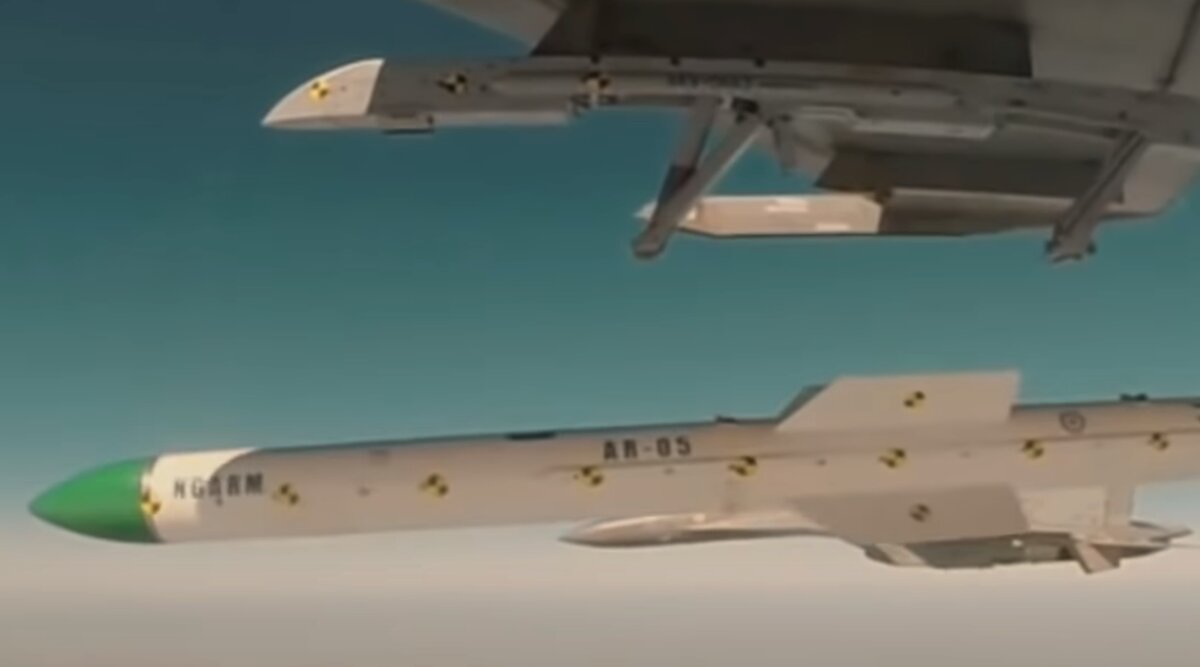Important Facts For Prelims
Anti Radiation Missile: Rudram-1
- 10 Oct 2020
- 3 min read
Why in News
The Defence Research and Development Organisation (DRDO) has successfully flight tested indigenously developed Anti Radiation Missile (Rudram-1).
Key Points
- About Anti Radiation Missiles:
- Aim: These are designed to detect, track and neutralise the adversary’s radar, communication assets and other radio frequency sources, which are generally part of their air defence systems.
- These can locate and target any radiation emitting source.
- These can play a key role in neutralising any jamming platforms of the enemy or take out radar stations thereby clearing a path for own fighters to carry out an offensive and also prevent own systems from being jammed.
- Components:
- Inertial navigation system: A computerised mechanism that uses changes in the object’s own position — coupled with GPS, which is satellite-based.
- 'Passive homing head' for Guidance: A system that can detect, classify and engage targets (radio frequency sources in this case) over a wide band of frequencies as programmed.
- Aim: These are designed to detect, track and neutralise the adversary’s radar, communication assets and other radio frequency sources, which are generally part of their air defence systems.
- About Rudram-1:
- Development and Test: It is an air-to-surface missile, designed and developed by the DRDO.
- DRDO conducted a successful test of the New Generation Anti Radiation Missile (NGRAM) also called the Rudram-1 at the Integrated Test Range (ITR) in Balasore (Odisha).
- Rudram-1 is the first indigenous anti-radiation missile of the country.
- Capability: Once the missile locks on the target, it is capable of striking accurately even if the radiation source switches off in between.
- Operational Features:
- The missile, integrated with SU-30 MkI aircraft, has a capability of varying ranges based on the launch conditions.
- It can be adapted for launch from other fighter jets too.
- It can be launched from altitudes of 500 m to 15 km and speeds of 0.6 to 2 mach.
- The missile, integrated with SU-30 MkI aircraft, has a capability of varying ranges based on the launch conditions.
- Development and Test: It is an air-to-surface missile, designed and developed by the DRDO.
- Significance:
- Rudram has been developed for the Indian Air Force - IAF’s requirement to enhance its Suppression of Enemy Air Defence (SEAD) capability.
- Further, modern-day warfare is more and more network-centric, which means it comprises elaborate detection, surveillance and communication systems that are integrated with the weapons systems.
- This is yet another test of indigenously developed weapons systems in addition to the recent tests of Shaurya missile or Hypersonic Technology Demonstrator Vehicle (HSTDV), which is an unmanned scramjet vehicle, or the test of flight test of a Supersonic Missile Assisted Release of Torpedo (SMART) system.







